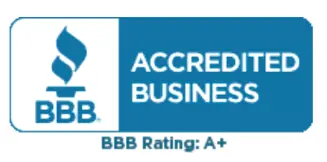-
GRANISETRON (gra NI se tron) is an antiemetic. It is used to prevent nausea and vomiting caused by chemotherapy.
This medicine may be used for other purposes; ask your health care provider or pharmacist if you have questions.
-
This medicine is for external use only. Follow the directions on the prescription label. Apply the patch to an area of the upper, outer arm that is clean and dry. Avoid injured, irritated, calloused, or scarred areas. Use a different site each time to prevent skin irritation. Do not cut or trim the patch. One patch can last for up to 7 days. Do not use your medicine more often than directed. Do not stop using except on the advice of your doctor or health care professional.
Talk to your pediatrician regarding the use of this medicine in children. Special care may be needed.
Overdosage: If you think you have taken too much of this medicine contact a poison control center or emergency room at once.
NOTE: This medicine is only for you. Do not share this medicine with others.
-
Do not take this medicine with any of the following medications:
-certain medicines for fungal infections like fluconazole, itraconazole, ketoconazole, posaconazole, voriconazole
-cisapride
-dronedarone
-pimozide
-thioridazine
This medicine may also interact with the following medications:
-certain medicines for depression, anxiety, or psychotic disturbances
-fentanyl
-linezolid
-MAOIs like Carbex, Eldepryl, Marplan, Nardil, and Parnate
-methylene blue (injected into a vein)
-other medicines that prolong the QT interval (cause an abnormal heart rhythm) like dofetilide, ziprasidone
-phenobarbital
-tramadol
This list may not describe all possible interactions. Give your health care provider a list of all the medicines, herbs, non-prescription drugs, or dietary supplements you use. Also tell them if you smoke, drink alcohol, or use illegal drugs. Some items may interact with your medicine.
-
Your condition will be monitored after taking this medicine.
The patch can make you more sensitive to the sun. Keep the area of your skin where the patch is applied out of the sun. Cover the patch with clothing if you cannot keep out of the sun. Continue to keep the area covered and out of the sun for 10 days after removing the patch. Do not use sun lamps or tanning beds/booths.
-
It is important not to miss your dose. Notify your health care provider if you are not able to apply the patch 24 to 48 hours before starting chemotherapy.
-
Side effects that you should report to your doctor or health care professional as soon as possible:
-allergic reactions like skin rash, itching or hives, swelling of the face, lips, or tongue
-breathing problems
-confusion
-constipation
-dizziness
-fast, irregular heartbeat
-feeling faint or lightheaded, falls
-fever and chills
-loss of balance or coordination
-seizures
-severe pain, swelling, or tenderness in the abdomen
-skin irritation or skin reaction
-sweating
-tightness in the chest
-tremors
-unusually weak or tired
Side effects that usually do not require medical attention (report to your doctor or health care professional if they continue or are bothersome):
-diarrhea
-headache
This list may not describe all possible side effects. Call your doctor for medical advice about side effects. You may report side effects to FDA at 1-800-FDA-1088.
-
Keep out of the reach of children.
Store at room temperature between 15 and 30 degrees C (56 and 86 degrees F). Keep in the original container. Throw away any unused patches after the expiration date.
Dispose of used patches properly. Since used patches may still contain active medicine, fold the patch in half so that it sticks to itself prior to disposal.
NOTE: This sheet is a summary. It may not cover all possible information. If you have questions about this medicine, talk to your doctor, pharmacist, or health care provider.
DISCLAIMER: This drug information content is provided for informational purposes only and is not intended to be a substitute for professional medical advice, diagnosis, or treatment. Patients should always consult their physician with any questions regarding a medical condition and to obtain medical advice and treatment. Drug information is sourced from GSDD (Gold Standard Drug Database ) provided by Elsevier.
 En Español
En Español

